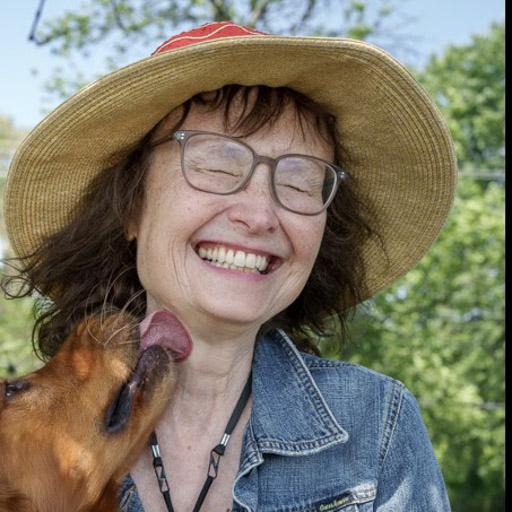
Martha Langford
Martha Langford, PhD
- Distinguished University Research Professor, Art History
- Research Chair and Director, Gail and Stephen A. Jarislowsky Institute for Studies in Canadian Art
- Editor-in-chief, Journal of Canadian Art History/Annales d'histoire de l'art canadien
- Fellow of the Royal Society of Canada (FRSC)
Are you the profile owner?
Sign in to editContact information
Biography
Martha Langford is the Research Chair and Director of the Gail and Stephen A. Jarislowsky Institute for Studies in Canadian Art and a Distinguished University Research Professor in the Department of Art History at Concordia University in Montreal. She is also editor-in-chief of Journal of Canadian Art History/Annales d'histoire de l'art canadien, editor of the Beaverbrook Foundation Series on Canadian Art History of McGill-Queen's University Press, and a member of the editorial board of History of Photography. In 2018, she became a Fellow of the Royal Society of Canada and in 2019, she joined the Provost’s Circle of Distinction.A long-time member of the Universities Art Association of Canada, she received the UAAC-AAUC Recognition Award in 2020.
Langford has written the first comprehensive survey of modern Canadian photographic art: "A Short History of Photography, 1900-2000," in Anne Whitelaw, Brian Foss, and Sandra Paikowsky, eds., The Visual Arts in Canada: The Twentieth Century (Oxford University Press, 2010). She is currently writing a three-volume history of photography in Canada (1839-2000), with the support of her Concordia University research chair, a Social Sciences and Humanities Research Grant (Insight), and a National Gallery of Canada research fellowship.
Her writing on photography and video addresses mediated experience in relation to constructs of perception, memory, and imagination. These interests have led her to the work in all media of Canadian artist Michael Snow. She is the author of an Art Canada Institute online artbook, Michael Snow: Life & Work, as well as numerous lectures, conference papers, book chapters, and catalogue essays, including "Repetition / La Répétition: Michael Snow and the Act of Memory," in Catsou Roberts, ed., Michael Snow almost Cover to Cover (Bristol and London: Arnolfini and Black Dog Press, 2001); "Michael Snow: Screen Writing," Switch 3 (Powerplant, spring 2010): 8-15; "Translation, Migration, Fascination: Motion Pictures by Michael Snow," in Michael Snow, Recent Works (Vienna: Secession,2012); and “Light Erasures and Shifting Temporalities in Some ‘Later’ Works by Michael Snow,” in Brad Buckley and John Conomos, eds., Erasure: The Spectre of Cultural Memory (Oxfordshire: Libri Publishing, 2015). She wrote the afterword to Michael Snow's last book, My Mother’s Collection of Photographs (Toronto: Art Gallery of Ontario, 2022).
Her books include Suspended Conversations: The Afterlife of Memory in Photographic Albums (McGill-Queen's University Press, 2001, now in a second, revised edition; and Scissors, Paper, Stone: Expressions of Memory in Contemporary Photographic Art (MQUP, 2007). Her edited collections, Image & Imagination, published in both English and French editions (MQUP, 2005) and Narratives Unfolding: National Art Histories in an Unfinished World (MQUP, 2017) have featured original essays by leading and emerging scholars from around the world. Her studies of vernacular photography include A Cold War Tourist and His Camera, co-written with John Langford (MQUP, 2011) and "Strange Bedfellows: Appropriations of the Vernacular by Photographic Artists," in Photography & Culture 1:1 (2008). In 2020, her work appeared in two new compendia for photographic studies: “Photographic Acts and Arts of Memory,” in Stephen Bull, ed., A Companion to Photography (Wiley Blackwell) and “Domestic Collections,” in Gil Pasternak, ed., The Handbook of Photographic Studies (Bloomsbury Visual Arts).
Langford was the Executive Producer of the National Film Board, Still Photography Division, from 1981 to 1985, when she oversaw the transfer of its collection and program to the National Gallery of Canada, becoming the chief curator and founding director of the NGC affiliate, the Canadian Museum of Contemporary Photography (CMCP, 1985-1994). In these roles, she curated numerous photographic exhibitions, both solo and thematic, and published important books and catalogues, notably 13 Essays on Photography (1991) and Beau (1992), which inaugurated the new museum at 1 Rideau Canal. In 2005, she was artistic director of the international photographic biennale, Le Mois de la Photo à Montréal 2005, with 29 exhibitions city-wide. More recently, she co-curated, with Sherry Farrell Racette, Unmasking: Arthur Renwick, Adrian Stimson, Jeff Thomas (2009) for the Canadian Cultural Centre in Paris and the Canadian representation in Musée du Quai Branly photographic biennale PhotoQuai 2009. Also in 2009, she was the commissioning curator for Preoccupations: Photographic Explorations of the Grey Nuns Mother House for the Faculty of Fine Arts, Concordia University – an exhibition now on permanent display at the Grey Nuns residence.
Langford received her PhD from McGill University in 1997, followed by fellowships held at the Institute for the Humanities of Simon Fraser University and the National Gallery of Canada.
Research & Teaching Interests
- Photographic History and Theory
- Canadian Photographic Historiography
- Twentieth-Century Canadian Art
- Visual Culture
- Photographic Experience (Memory and Imagination)
- Institutional Theory
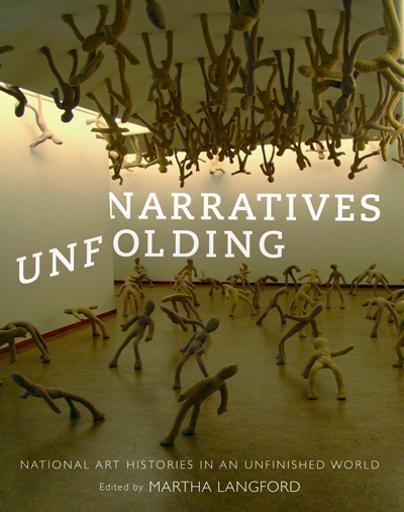
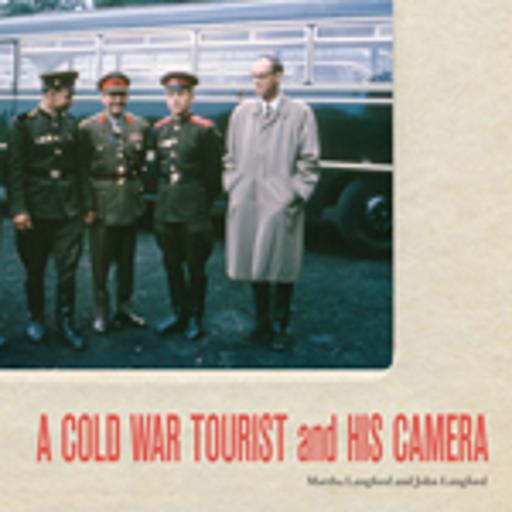
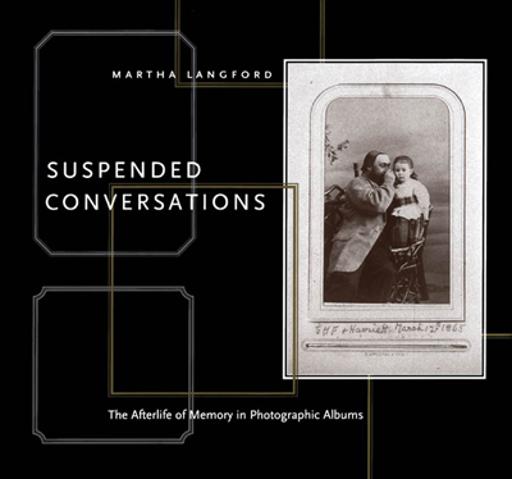
Teaching activities
Drawing on her specialization, professional background, and current research, Martha Langford has taught undergraduate courses on photographic history and theory, museums and other art institutions, and individual practice (Life and Work of Michael Snow). At the graduate level, Langford's seminars tackle thematic and methodological questions, such as "Artists' Words," "What Use Is Photography?" and "How to Explain Art to the 99%." Her lectures and course materials are interdisciplinary, while stressing creative processes, spectatorial experience, and socio-political formations.
Martha Langford has supervised 25 MA theses and 8 PhD theses to completion. She is currently supervising or co-supervising 7 doctoral students in the interuniversity PhD program in art history and co-supervising 1 MA student (Department of History).
Research activities
Current Research
Knowledge & Networks
As research chair and director of the Gail and Stephen A. Jarislowsky Institutefor Studies in Canadian Art, I am initiating and/or participating in projects initiated by Institute members and their partners in investigations of local,regional, and national institutions that have defined and produced Canadian art in all media. The Institute currently orients is research and mobilization along eight axes: Indigenous Art History; Ethnocultural Art Histories; Networked Art Histories; Urban Formations; Materialities; Settler-colonial Art History; Photographic Studies; and Women’s Art History. New directions are developed through seed funding of members’ and graduate students’ collaborative projects, as well as affiliate student organizations programs and publications. The modest goal is nothing less than redefinition of the field. My particular contributions revolve around photographic circuits that began to form in the late 1960s and the cultural stimulus programs of the so-called Pelletier years (1968-1975).
A History of Photography in Canada
Embracing a wide range of photographic practice, circulation, and experience, this useful book will provide the answer to Canadian photographic studies’ burning question: what did Canadians know about photography and when did they know it? This critical history will be complemented by a book of essays, Momentous Indecision: Canadian Photographic Studies at its Inception, 1968-1983, which will examine the episodic and sometimes fractured development of the field. This research is being supported by the Jarislowsky research chair and a research fellowship in the Library and Archives of the National Gallery of Canada.
Situating Photographic Knowledge/Les lieux des savoirs photographiques
Formes actuelles de l’expérience photographique (FAEP) is an interdisciplinary, inter-generational, inter-university, and inter-institutional research team whose individual programs converge on the problematics of photographic knowledge. Interdisciplinary because we are intent on the relational structure of photographic meaning and how it impacts on society. Inter-generational because exchanges between established and emergent scholars are pinpointing key areas of investigation in a field accelerated by new technologies. Inter-university because photographic studies in Quebec institutions has developed distinct and complementary strengths whose combination has the potential to enrich photographic discourse in all its artistic, scientific, social, and pedagogical settings. Inter-institutional as participants and distinguished guests at our Spring Schools have demonstrated clearly that different institutions – libraries, archives, art galleries, laboratories, information bureaus, artists’ studios, and universities – make different demands on the image, which responds with different declarations. As principal investigator of this FRQSC-funded team, my role is to channel its energies through Spring School, conference sessions, lectures, and publications.
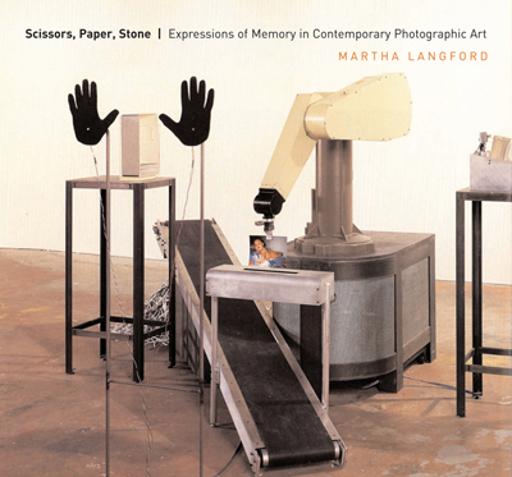
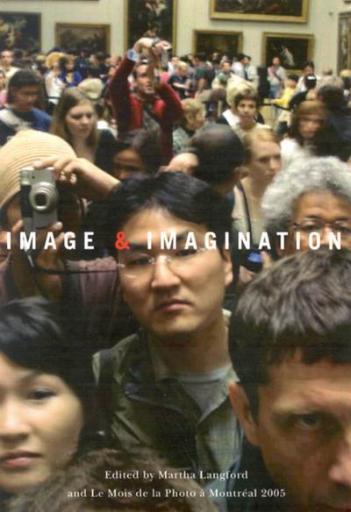
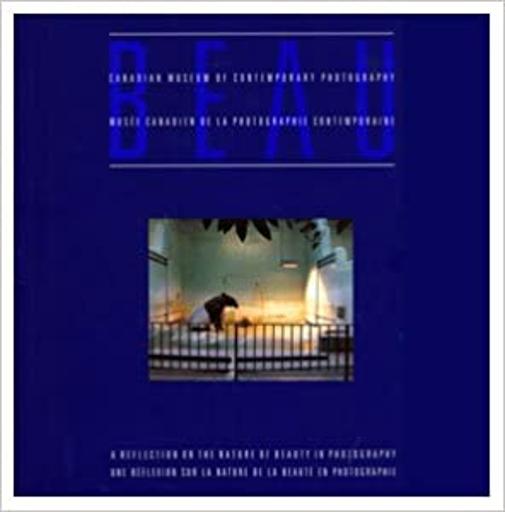
Publications
Books (monographs, edited collections, or co-authored)
Co-edited with Johanne Sloan, Photogenic Montreal: Activisms and Archives in a Post-industrial City. In press, McGill-Queen’s University Press, Forthcoming 2021.
Narratives Unfolding: National Art Histories in an Unfinished World. Modern and contemporary art histories in Canada, Egypt, Iceland, India, Ireland,Israel/Palestine, Romania, Scotland, Turkey, and the United Arab Emirates. Montreal and Kingston: McGill-Queen’s University Press, 2017.
Michael Snow: Life and Work/Sa vie et son oeuvre. Online art book, Toronto: Art Canada Institute/Institut de l’art canadien, 2013. http://www.aci-iac.ca/michael-snow
Co-written with John Langford. A Cold War Tourist and His Camera. Montreal and Kingston: McGill-Queen’s University Press, 2011.
Scissors, Paper, Stone: Expressions of Memory in Contemporary Photographic Art. Montreal and Kingston: McGill-Queen's University Press, 2007. Shortlisted for the Raymond Klibansky Prize for best English-language book in the Humanities. Reissued in paperback, 2011.
Image & Imagination. Edited collection and catalogue. Montreal and Kingston: McGill-Queen's University Press, 2005. Bilingual. Two volumes.
Suspended Conversations: The Afterlife of Memory in Photographic Albums. Montreal and Kingston: McGill-Queen's University Press, 2001. Shortlisted for the Harold Adam Innis Prize in the Social Sciences. Reissued in paperback, 2008. Revised 2nd edition forthcoming 2021.
For chapters in books, journal and magazine articles, book reviews, conference presentations and lectures, and exhibitions, please download Martha Langford's CV.
A Sampling of Articles and Chapters
"Domestic Collections," in Gil Pasternak, ed., The Handbook of Photographic Studies. London and New York: Berg, 2020, 530-547.
“Photographic Acts and Arts of Memory,” in Stephen Bull, ed., A Companion to Photography, Blackwell Companion series. Hoboken, N.J.: Wiley Blackwell, 2020, 61-83.
“Depth of Field: A Conversation about Photographers from Japan in Canada,” with Canadian Photography Institute staff, Photo Blog. National Gallery of Canada. 30 October 2019. Accessed 29 July 2020. https://www.gallery.ca/photo-blog/depth-of-field-a-conversation-about-photographers-from-japan-in-canada
“Kan Azuma and the Japanese Canadian Diaspora: perception, identity, and their erosion,” in Tanya Sheehan, ed., Photography and Migration (Oxfordshire: Taylor & Francis/Routledge, 2018), 216-232.
“That Other Woman: The Woman Who Accompanied the Cold War Tourist to Paris,” in Silke Arnold-de Simine and Joanne Leal, eds. Picturing the Family: Media, Narrative, Memory (London: Bloomsbury Academic Publishers, 2018), 19-39.
“Mrs. Wagner’s Aspirations: The Album as Monument,” in Benedict Burbridge and Annebella Pollen, ed., Photography Reframed (I.B. Tauris, 2018), 62-73.
“About image nation, 1970-1982.” Journal of Canadian Art History/Annales d’histoire de l’art canadien. Special issue: Networked Print Culture. Johanne Sloan, ed. 36:1(2015; published 2016): 102-127.
“Migrant Mothers:Richard Harrington’s First Nations and Inuit ‘Madonnas’.” History of Photography. 40:1 (2016): 28-48.
“When the Carousel stops turning… What shall we say about the slide show?” Intermédialités : histoire et théorie des arts, des lettres et des techniques / Intermediality: History andTheory of the Arts, Literature and Technologies. Presses de l’Université de Montréal.Thematic issue: projeter / projecting. Sous la direction de Larisa Dryansky et Érika Wicky. 24-25 (automne 2014, printemps 2015 – published 2016).Online: ISSN: 1920-3136.
Co-written with Elizabeth E. Cavaliere, Philippe Guillaume, Karla McManus, Sharon Murray, and Aurèle Parisien, “Imaged Communities: Putting Canadian Photographic History in its Place.” Journal of Canadian Studies 49 (2016): 296-354.
“Calm, Cool, Collected: Canadian Multiculturalism (Domestic Globalism) Through a Cold War Lens,” Visual Studies. Special issue: Cold War Visual Alliances 30:2 (2015): 166-181.
“Cette autre femme: la femme qui accompagnait le touriste de la guerre froide à Paris,” AnoukSugàr and Élise Bonette, trans. In Magali Uhl, ed. Les récits visuels de soi. Mises en récit artistiques et nouvelles scénographies de l’intime. Paris : Presses universitaires de Paris Ouest, 2015, 33-51.
“Light Erasures and Shifting Temporalities in Some ‘Later’ Works by Michael Snow,” in Brad Buckley and John Conomos, eds., Erasure:The Spectre of Cultural Memory. Faringdon, Oxfordshire: Libri Publishing, 2015, 179-198.
“Photography: Canada,” Grove Art Online. Oxford Art Online/Oxford University Press. 22 January 2014.
“Some Uses of Disenchantment: Vladimir Putin’s Staged Photography,” Fillip 18, Kate Steinmann, ed. (Spring 2013): 4-11; notes, 138; further illustrations, ed. Jeff Khonsary, 146-148.
“Michael Snow,” in Rosa Olivares, ed., 100 Video Artists. Madrid: EXIT Publicaciones, 2010, 370.
“What Use is Photography?” in Christopher Coppock and Paul Seawright, eds., So Now Then. Cardiff: Ffotogallery, 2006, 164-7.
"When is a Photographic Self-Portrait Not?" in Autoportrait dans la photographie canadienne contemporaine. Québec: Éditions J'ai VU, 2004, 14-21.
"Repetition / La Répétition: Michael Snow and the Act of Memory," in Catsou Roberts, ed., Michael Snow almost Cover to Cover. Bristol and London: Arnolfini and Black Dog Press, 2001, 34-75.
"An Excursion into the Amateur Grotesque," in Ian Angus, ed., Anarcho-Modernism: In Honour of Jerry Zaslove. Vancouver: Talonbooks, 2001, 99-113.
"Robert Minden, Photographer and Storyteller," West Coast Line 34/35:1(Spring 2001): 54-76.
"Brenda Pelkey: Landscapes of Imminence," in Liz Wells and IRIS: The Women's Photography Project, eds., Shifting Horizons: Women's Landscape Photography Now. Stoke-on-Trent: Staffordshire University and I. B. Tauris, 2000, 74-79.
"In The Playground of Allusion," exposure (Journal of the Society for Photographic Education) 31:3/4 (1998): 13-24.
"The Canadian Museum of Contemporary Photography," History of Photography, Vol. 20, no. 2 (Summer 1996): 174-180.
"Entre la parole et la pensée: Traces of Dazibao (then and now)," Portrait d'un malentendu, Chroniques photographiques récentes. Montréal: Dazibao / Centre de photographies actuelles, 1996, 9-16.
Selected Exhibition Catalogues and Essays in Catalogues
Preoccupations: Photographic Explorations of the GreyNuns Mother House, exh. cat. Galerie FOFA Gallery, Montreal,2009.
The Power of Reflection, exh. cat., Liane and Danny Taran Gallery, Saidye Bronfman Centre for the Arts, Montréal, 2001.
La Méthode et l'extase: Richard Baillargeon, MichelCampeau, Bertrand Carrière, Occurrence, Espaced'art et d'essai contemporains, Montréal, 2001.
Interior Britannia: Richard Billingham / Anna Fox, Liane and Danny TaranGallery, Saidye Bronfman Centre for the Arts, Montréal, 1999.
On Space, Memory and Metaphor: The Landscape in Photographic Reprise, Vox Populi, Montréal, 1997.
Tom Gibson: False Evidence Appearing Real, Canadian Museum of Contemporary Photography/ NationalGallery of Canada, Ottawa, 1993.
George Steeves: 1979-1993, Canadian Museum ofContemporary Photography / National Gallery of Canada, Ottawa, 1993.
Beau: A Reflection on the Nature of Beauty in Photography, Canadian Museumof Contemporary Photography / National Gallery of Canada, Ottawa, 1992.
TheLast Silence: Pavane for a Dying World / Jennifer Dickson, Canadian Museumof Contemporary Photography / National Gallery of Canada, Ottawa, 1991.
Anima Mundi: Still Life in Britain, CanadianMuseum of Contemporary Photography / National Gallery of Canada, Ottawa, 1989.
Reality and Motive in Documentary Photography / Donigan Cumming, Canadian Museum of Contemporary Photography /National Gallery of Canada, Ottawa, 1986.
Genius Loci / Geoffrey James, Canadian Museum ofContemporary Photography / National Gallery of Canada, Ottawa, 1986.
Paradise,Still Photography Division /National Film Board of Canada, Ottawa, 1980.
Separate from the World: Meetings with Doukhobor-Canadians in British Columbia / Robert Minden, Still Photography Division / National Film Board of Canada, Ottawa, 1979.
Essays in Artists' Monographs and Exhibition Catalogues:
“Before, After, and Between: Living Through the Interior Landscapes of Brenda Francis Pelkey,” in Catharine Mastin, ed, Territories: Brenda Francis Pelkey. Windsor: Art Gallery of Windsor and London UK: Black Dog, 2016/18, 66-73.
“Stops Along the Way: David Hlynsky's Communist (and Decommunizing) Shop Windows,” in David Hlynsky, Shopping through the Iron Curtain. London: Thames and Hudson, 2015, 196-203.
"Translation, Migration, Fascination:Motion Pictures by Michael Snow," in Michael Snow, Recent Works,Annette Südbeck, ed. Vienna: Secession, 2012,29-43.
“Paris after Atget, Evans, and Holownia,” in Paris after Atget: The Photographs of Thaddeus Holownia (Montreal: Beaux-arts des Amériques, 2011), 5-12 (including the French translation by Denis Lessard).
“A Murder of White Crows: Susan MacWilliam’s Varieties of Psychical Experience,” in Karen Downey,ed., Susan MacWilliam: Remote Viewing [exhibition catalogue for Northern Ireland’s participation in the 53rd Venice Biennale] (London: BlackDog, 2009), 128-135.
Co-authored with Sherry Farrell Racette, individual entries on Arthur Renwick, Adrian Stimson, Jeff Thomas; Canadian Cultural Centre, Paris, “Unmasking: Arthur Renwick, Adrian Stimson, Jeff Thomas,” in Musée du Quai Branly, Photoquai: Deuxième biennale des images du monde (Paris, 2009), 128-9; 134-135; 138-9; 170-171.
“Imagined Memories: On Rafael Goldchain’s Family Album,” in Rafael Goldchain, I Am My Family: Photographic Memories and Fictions. New York:Princeton Architectural Press, 2008, 10-15.
“Prezensa continua: le projezioni di Michael Snow” (“Continuous Presence: Michael Snow’s Projections”), in Fondazione Ragghianti and Lucca Film Festival 2007, Michael Snow: Cinema, Installazioni, Video e Arti Visuali, trans.Guilia Bancheri, 2007, 23-9.
"Arnaud Maggs,Turning Colours," in Robert McLaughlin Gallery, Arnaud Maggs Nomenclature, exhibition catalogue by Linda Jansma, 2006, 14-25.
"Rephotography Reprised," in Andrzej Maciejewski, After Notman: Montreal Views—A Century Apart. Toronto and Montreal: Firefly Press and the McCord Museum of CanadianHistory, 2003, 42-51.
"Marian Penner Bancroft: Her Tremulous Implacements," in Trouble en vue: Marian Penner Bancroft et Sylvie Readman. Services culturels de l'Ambassade du Canada àParis, Paris, 2002, 53-62.
"Omens of Immortality: Bertand Carrière's Signes de jour, in Bertrand Carrière, Signes de jour. Montréal: Les 400 coups, 2002, 7-14.
"The Power of Reflection," Le Pouvoir de l'image:Le Mois de la photo à Montréal 2001 (Montreal: Vox, centre de diffusion de la photographie,2001), 154-161.
"Memories Reconciled: The Picture-World of Michel Lamothe," Michel Lamothe: Même les cigales dormaient. Québec: J'ai VU, 2000, 6-14.
"Visual Matters," Le souci du document: Le Mois de la Photo à Montréal 1999, Pierre Blache, Marie-JoséeJean and Anne-Marie Ninacs, eds. Montréal/Laval: Vox/Les éditions Les 400 coups, 1999, 132-139.
"The Origins of Diana," slytod: Diana Thorneycroft (exh. cat).Winnipeg: Gallery 1.1.1. and The University of Manitoba Press, 1998, 11-18.
"Photographic Emanations: The ImmaterialGrotesque," L'Immatérielphotographique: du fantastique, dugrotesque / The Photographie Immaterial: Of the Fantastic and the Grotesque (exh. cat.). Services culturels del'Ambassade du Canada à Paris, Paris, 1996, 13-17.
"Conversations between Covers: TheNature of Photographic Albums," Obsessions:From Wunderkammer to Cyberspace (cat.). Foto Biennale Enschede, The Netherlands,1995, 105-122.
"125 Portraits," 125 Portraits: Companions of the Order ofCanada / Harry Palmer. Ottawa: Canada Communications Group, 1992, 12-14.
"The Autobiography of George Steeves," Le Mois de laPhoto à Montréal Septembre 1991 (exh. cat.). Montréal: Vox Populi, 1991, 78-83.
"Contemporary Canadian Photography: Identifying the Players," Power Plays (exh. cat.) Edinburgh: Stills, The Scottish Photography Group Gallery, 1989, 36-38.
"Anima Mundi: Still Life inBritain," Le Mois de la Photo à Montréal 1989 (exh. cat.) Montréal: Vox Populi, 1989, 62-65; French trans.,195-197.
"Of the Railcuts, Mines and Homesteads," Breaking Ground: Photographs by Edward Burtynsky (exh. cat.) Toronto, 1988, unpaginated.
Participation activities
Keynotes, public lectures and conferences
Speaking of Photography is an annual lecture series on the history, theory , and practice of photography. It has been organized by Martha Langford for the Department of Art History for over 13 years.
https://www.concordia.ca/research/jarislowsky/events/photography.html
For Martha Langford's scholarly and public presentations, please download her CV.

